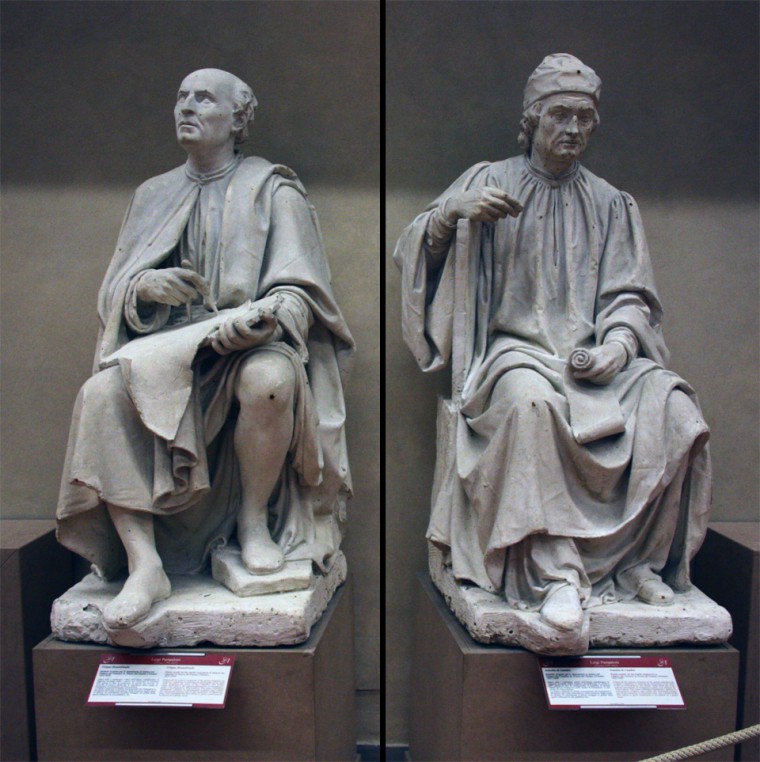Gipsoteca Bartolini, a 19th century hall

In 1784, the Grand Duke of Tuscany, Peter Leopold, converted the friary hospital of San Matthew into a gallery so that students in the adjoining Accademia delle Belle Arti , or Fine Arts Academy, could study the greatest works of the past. Therefore, in the “Gipsoteca Bartolini” visitors will find a selection of the finest 19th century plaster casts by Lorenzo Bartolini, one of the great sculptors and brilliant professors of the Academy.

The artworks exhibited alongside the Gipsoteca (which mean the hall of models) ideally reproduce Bartolini’s art studio, showcasing various typologies of celebratory, private or monumental plaster cast models often intended for sepulchers. Currently, the Hall exhibits two typologies of 19th century works. The collection of plaster models by Bartolini and Pampaloni, and the collection of paintings and sculptures which were awarded by the Academy of Fine Arts of Florence. Overall, the works in this room witness the evolution of Florentine artistic culture between Neoclassicism and Romanticism. Among the most famous works, grand models celebrate great artists of the past such as Machiavelli (by Lorenzo Bartolini), Arnolfo di Cambio and Brunelleschi (by Pampaloni) or wealthy foreign aristocrats settled in Florence during the 19th century.

Most Russian, English and Polish noble families requested busts and medallions of Lorenzo Bartolini and many delightful infant portraits to Luigi Pampaloni. Their selected European clientèle admired the two sculptors for the well-known ability to express grace and beauty, adding a fine psychological analysis of the character.
 Most statues and busts reveal the 19th century aesthetic taste from head to toe, showing the typical hairstyle and fashion of the period. The decision to follow a specific style reveals the sensitivity and the prevalent ideology at the historical moment it reflects. In the first half of the 19th century fashion trends were set in France, featuring modest volume of hairstyle, and simple vertical lines which defined women’s tunics and gowns during the neoclassical and Empire period, faithfully depicted by Lorenzo Bartolini during his long brilliant career.
Most statues and busts reveal the 19th century aesthetic taste from head to toe, showing the typical hairstyle and fashion of the period. The decision to follow a specific style reveals the sensitivity and the prevalent ideology at the historical moment it reflects. In the first half of the 19th century fashion trends were set in France, featuring modest volume of hairstyle, and simple vertical lines which defined women’s tunics and gowns during the neoclassical and Empire period, faithfully depicted by Lorenzo Bartolini during his long brilliant career.
Modeling Techniques
All these elegant models were obtained by clay: nails were inserted into the model at regular intervals because they were fundamental when the block of marble was rough-hewn in order to have precise references for the different depths to obtain. At times the models were treated with patina in order to imitate the effect of terracotta, marble or bronze. The technique of modeling is an old and delicate process used by sculptors before facing the block of marble. The process is illustrated by an interesting video in the Gipsoteca which shows the creation of a plaster cast model step by step.
Pontormo

Along the left side of the gipsoteca, hidden among the casts, visitors can admire a small shaped fresco painting (91cm x 150 cm) by Jacopo Carrucci, known as Pontormo, painted around 1514. This fresco is the first acknowledged work by Pontormo, painted using a special compound called “terra verde” (green earth), a pigment rich in iron which gave the main green tone to the fresco. The painting depicts the former use of the Gipsoteca hall, when this part of the Museum used to be the women’s ward of the ancient Hospital of St. Matthew. Visitors can admire a precious “photograph” of the time, featuring the daily life within the hospital around modest wooden beds where nuns look after the ill. Among the characters, some are praying, others offering charity gifts and others assisting during foot washings of the Blessed Humility.








